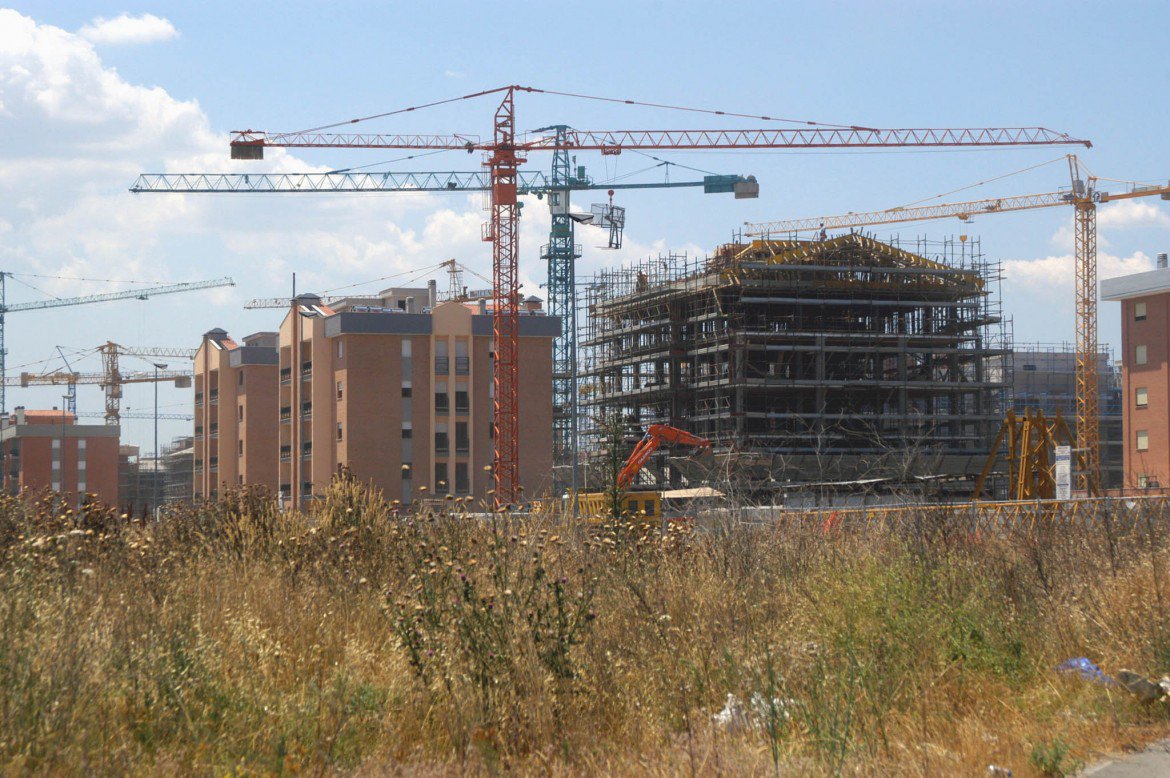Environment
Development has a price: €800 million per year
According to a new report published in Italy, the loss of soil in the environment does quantifiable damage.

Every second, four square meters of soil disappear in Italy under a layer of cement. That makes about 35 hectares a day, an unnatural, unstoppable disaster that in just two years has claimed 250 square kilometers of land.
And this was not even the worst two-year period, as the aggression against Italy’s ecosystems has slowed lately. If we look only at the lost farmland, in less than 20 years construction has devoured more than 2 million hectares. Sixteen percent of the countryside has disappeared. And agricultural areas continue to disappear at a daily rate of 55 hectares (350 square meters erode every year for each citizen).
This suicidal madness is the result of unsustainable development that won’t stop — like happily sawing the branch on which you sit — and has an annual cost that can be quantified in over €800 million.
This is how much Italians could pay starting in 2016 just to cope with the consequences of the soil consumption between 2012-2015. The estimated costs, and not only in economic terms, were released last week during a presentation of the ISPRA 2016 report on land use in Italy (Higher Institute for Environmental Protection and Research).
“Despite this slowdown,” explained Michele Munafò, responsible for the report, “the land consumption continues and this has serious consequences in economic terms. It is important to remember that, in addition to the directly affected area this also has an impact on the surrounding areas, thus affecting more than half of the national territory, causing the loss of ecosystem services that soil provides us for free.”
According to an estimate of the “hidden costs” — those not perceived immediately that can be estimated in the projection of the consequences — every hectare of occupied land would present a bill to the community of up to €55,000. It depends on the type of soil and its usefulness to the ecosystem: agricultural production (400 million), carbon storage (about 150 million), lost protection against erosion (over 120 million), damage caused by the failure of water infiltration (almost 100 million), the absence of pollinators (3 million).
But this math is not sufficient to explain the ongoing catastrophe on a global scale: “Stopping soil loss and improving the condition of fertile land represent two essential priorities for the planet in the coming years,” said Michele Pisante, Commissioner of the Center for research in agriculture and analysis of the agrarian economy (acronym in Italian Crea). “Winning or losing this challenge will be the difference between life and death for millions of people and will lay the conditions for new social, political and economic balance.”
In urban areas, land consumption also alters the microclimate adjustment (an increase of 20 hectares per sacrificed square kilometer causes an increase of 0.6 degrees in temperature), and this has a cost. The three worst cities are Milan (45 million), Rome (39 million) and Venice (27 million). In addition, the report says, the negative impacts of soil loss occur not only in the areas directly involved, but up to a 100 meters away. The phenomenon, curiously, covers both major population centers, which have seen an increase in the population, and small towns where the population is not growing.
Commenting on the ISPRA report, the farmers’ associations stressed two key issues for the condition of the “Italian system.” Food security and hydrogeological imbalance. “The consumption of cultivated land is likely to be reflected in the food supply figures in Italy, where today we provide for the food requirements of three out of four citizens,” said Dino Scanavino, the president of the largest farmers union, Coldiretti. “We have to resort to imports to cover this production deficit.”
On a territory made more fragile, writes Coldiretti, heavy rainfall caused by climate change cannot be absorbed by the soil. “The result is that now up to 7,145 Italian municipalities, 88.3 percent of the total, are at risk of landslides and floods.”
Those politicians who are questioned on the subject today cannot help but respond like Barbara Degani, Under Secretary for Environment of the Renzi Government: “The theme is at the center of the political agenda.”
It’s true however that the strategies and regulations under discussion to consider the soil a common asset have remained a dead letter for years. “This is why we ask Parliament to approve in this legislation and in a short time the bill against the consumption of land, in debate for four years and now being debated in the Senate,” said Damiano Di Simine of the national secretariat of Legambiente. “At the European Union, meanwhile, we ask for the approval of an European Directive on soil.”
Legambiente, with other associations, will launch in September a European petition that will involve more than 300 organizations. The objective is to collect one million signatures to push the E.U. institutions to legislate for the protection of soil in Europe.
Originally published at http://ilmanifesto.info/il-cemento-che-avanza/ on 2016-07-14
